12 Unique Things to Do in Argentina During Your Trip

Disclaimer: This post may contain affiliate links, which means that if you click on any of those links and make a purchase, I’ll get a small commission, at no cost to you, to help support this website.
Last Updated on July 22, 2024
Looking for some incredible things to experience in Argentina? Travelers share below their favorite adventures and insights into some of the best activities in the country.
Whether you’re seeking to immerse yourself in the country’s rich culture and traditions, challenge yourself with a trekking expedition up the mountains, or witness Argentina’s unspoiled wilderness, discover some of the most unique things to do in Argentina.
HELPFUL WEBSITES TO HELP YOU PLAN YOUR TRIP
HELPFUL WEBSITES TO HELP YOU PLAN YOUR TRIP
Hiking to Laguna De Los Tres

By Carryn of Torn Tackies Travel
Laguna de Los Tres is one of the most spectacular places to visit in the hiking mecca of El Chalten, Argentina. The turquoise laguna sits at the foot of the famous Fitz Roy Mountain and offers the best views of the craggy peaks and lagunas that surround it.
The iconic laguna is a bucket list attraction in Argentinian Patagonia, but it’s a tough hike to get there.
Starting from El Chalten, the trail is well-marked and offers diverse scenery from the get-go. You’ll meander through forests, across streams, and walk up a steep path with loose rocks before arriving at Laguna de Los Tres.
The 22 km return hike takes 9 hours to complete. It’s a long, strenuous day. But is it worth it? Yes!
The views from Laguna de Los Tres are hard to beat. If you walk to the water’s edge and follow the path to the left, you’ll be spoiled with equally impressive views of Laguna Sucia.
If you’d prefer to do the hike over 2 days, there’s the option of camping at Poincenot Campground, which will allow you to reach Laguna De Los Tres for sunrise the next day.
To get to El Chalten, you’ll first need to make your way to El Calafate which has daily flights from Buenos Aires. From there, hop on a 3-hour bus north and you’ll arrive at the quaint village of El Chalten.
October to April is the hiking season in the region and crowds are at their peak during December and January. To avoid the busy trails, it’s best to start your hike before sunrise which will allow you to get ahead of the crowds.
Cruising the Lake District
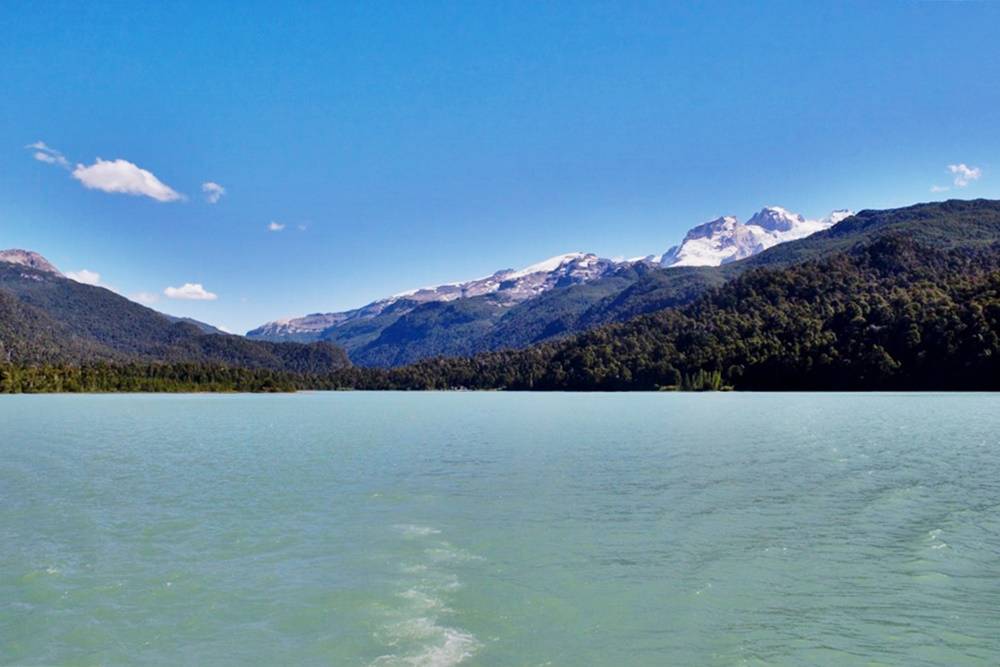
By Suzanne of Meandering Wild
The lakes around Bariloche, are collectively known as the Patagonia Lake District and it is easy to see how the region got its name. Large lakes as well as smaller lagoons can be seen from any of the hikes in the area and many provide a venue for water sports in the summer months.
Nahuel Huapi National Park is home to the largest and most popular lake in the Lake District region. Bariloche sits on the shore of Nahuel Huapi Lake with coarse sand beaches being accessible from the center. This turquoise lake is surrounded by snow-capped mountains and offers stunning views of the surrounding landscape.
Cruises around the lake take you from the bustle of city life to the quieter corners including the secluded Puerto Blest where a second cruise on Lago Frías completes a day in the Lake District.
Puerto Blest is a hotel resort that has the feeling of being remote when you are just an hour by boat from Bariloche. From Puerto Blest, a 2km walk or bus transfer takes you to the beautiful Lago Frías where the glaciers on Monte Tronador can be seen in the distance.
This is a magical lake with deep turquoise glacial water and no other visitors.
The only way to Lago Frías is by boat from Bariloche via Puerto Blest or a two-day hike from Pampa Linda.
The best time to visit the lakes in Patagonia is during the summer months (December to March). However, the lakes are also beautiful in the spring and fall when the weather is milder.
Trekking Along the Perito Moreno Glacier
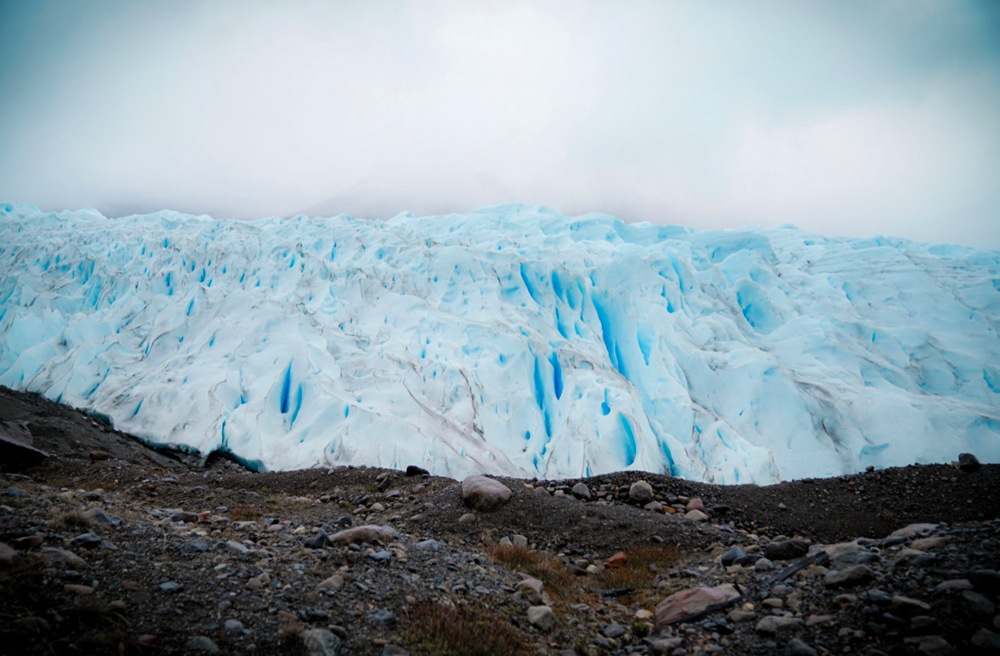
By Dani & Fede of Scratch Your Mapa
One of the most unique things to do in all of Argentina is to experience one of the most stunning glaciers in the world, Perito Moreno. While you can experience seeing the glacier in many different ways, the most special way to do so is by trekking along Perito Moreno!
The all-day excursion starts with a visit to the iconic “pasarelas” or boardwalks that get you up close and person to the glacier. After this, your guide will drive you straight up to the glacier, where you will actually trek across the glacier itself! It requires special equipment, which is provided right before you start.
Doing the Big Ice Perito Moreno excursion is truly a once-in-a-lifetime experience, and is worth every penny! This is something that can only be done in the warmer months, and by going with a guide. Tours are offered from around Easter time until mid-October.
The company that runs the “Big Ice Perito Moreno” excursion is Hielo y Aventura, a local tour company, which is the only one that has permission to do this very special activity.
The nearest city you can fly to is Calafate, which is where all tours depart from, and a beautiful Patagonian city with a lot to offer!
Taking a Beagle Channel Boat Tour

By Maria of Map and Camera
Traveling to the end of the world has long been a dream of mine. Ushuaia is a place of beautiful landscapes, diverse wildlife, and endless opportunities for outdoor activities.
Of all the experiences in Ushuaia I tried, the Beagle Channel Boat Tour is undoubtedly my number one. There are two kinds of boat tours. The short one goes to Faro Les Éclaireurs and the longer one to the penguin colony at Isla Martillo.
The latter is only available in summer as the penguins migrate in winter. Keep in mind that the seasons in Ushuaia are the opposite of those in the northern hemisphere.
Many tourist offices at the passenger pier in Ushuaia offer the Beagle Channel boat tour. As the prices are more or less the same, what makes the difference is the type of boat.
The most popular tours are by catamaran. Catamarans are large and therefore less affected by rough seas. If you get sick at sea, choose the catamaran tour. Catamarans carry many people at once, so it can get a little crowded if you are trying to spot an animal or get the perfect photo.
I chose a Zodiac tour. Zodiacs carry a maximum of ten passengers, so there is plenty of room for everyone to take pictures or just admire the view. Because they are small boats, the port authorities allow them to go around the smaller islands in the Beagle Channel and get closer to the animals.
Nothing beats the excitement of “chasing” whales in a small boat. Or getting within a few feet of a colony of sea lions with their pups. Or watching dolphins play around the boat. Or simply admire the most breathtaking scenery of green hills topped with snow-capped peaks all around.
Riding the Old Patagonian Express
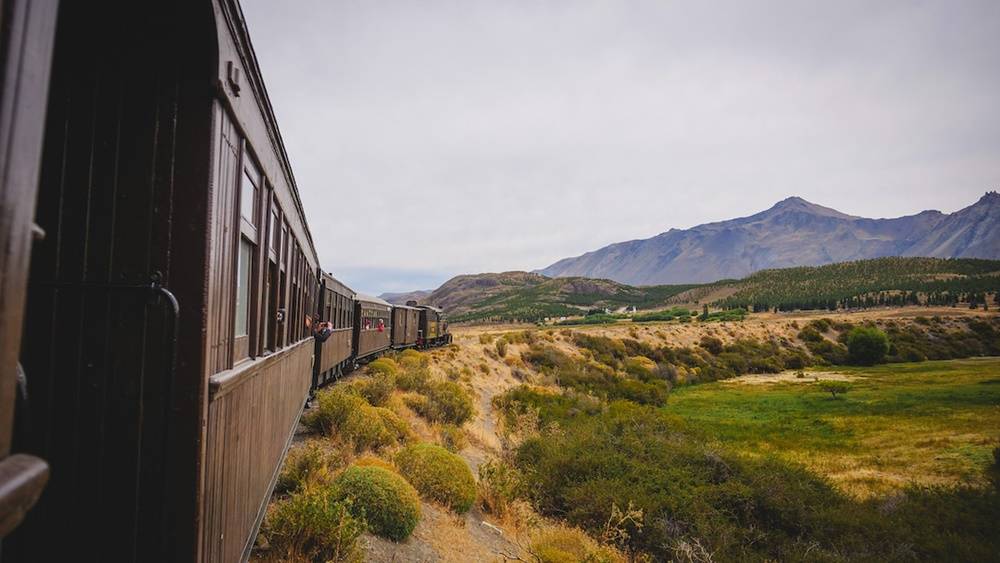
By Audrey of Che Argentina Travel
If you’re looking for a unique experience in Argentina, and specifically Patagonia, look no further than riding aboard the Old Patagonian Express!
This heritage tourist train will take you on one of the most famous journeys in the whole country along the foothills of the Andes Mountains, plus it’s a great opportunity to soak in the rugged Patagonian scenery aboard a historic steam locomotive train.
The Old Patagonian Express is locally known as La Trochita which translates to ‘little gauge’. The nickname refers to the train’s narrow gauge which is only 750 mm wide or about 2 feet 5 and a half inches.
At one point, the Old Patagonian Express stretched out 402 kilometers and was planned as part of a more extensive network that would connect all of Patagonia. However, that project was never completed, and as road networks improved, this train began to fall into disrepair.
It wasn’t until travel writer Paul Theroux published his book The Old Patagonian Express in 1978 that the train began to receive attention once more. Suddenly, travelers wanted to travel aboard this historic train!
Today, travelers can choose to ride three different segments of the Old Patagonian Express: Esquel to Nahuel Pan, El Maitén to Desvío Bruno Thomaé, or Ingeniero Jacobacci to Ojos de Agua. This is something that can be booked via a tour operator, or alternatively, you can purchase tickets right at the train station.
The route between Esquel and Nahuel Pan is by far the most famous as it offers epic views as the train ascends out of the valley and into the Patagonian steppe where sheep graze and mountains rise up in the near horizon.
Upon arrival in Nahuel Pan, guests can visit the artisanal fair which features plenty of handcrafted souvenirs as well as food stands. You also have the Museum of Patagonian Culture, a small two-room museum that focuses on the indigenous peoples of Patagonia.
If you enjoy train travel and plan to visit northern Patagonia, this is an experience worth adding to your list!
Trekking in Bariloche
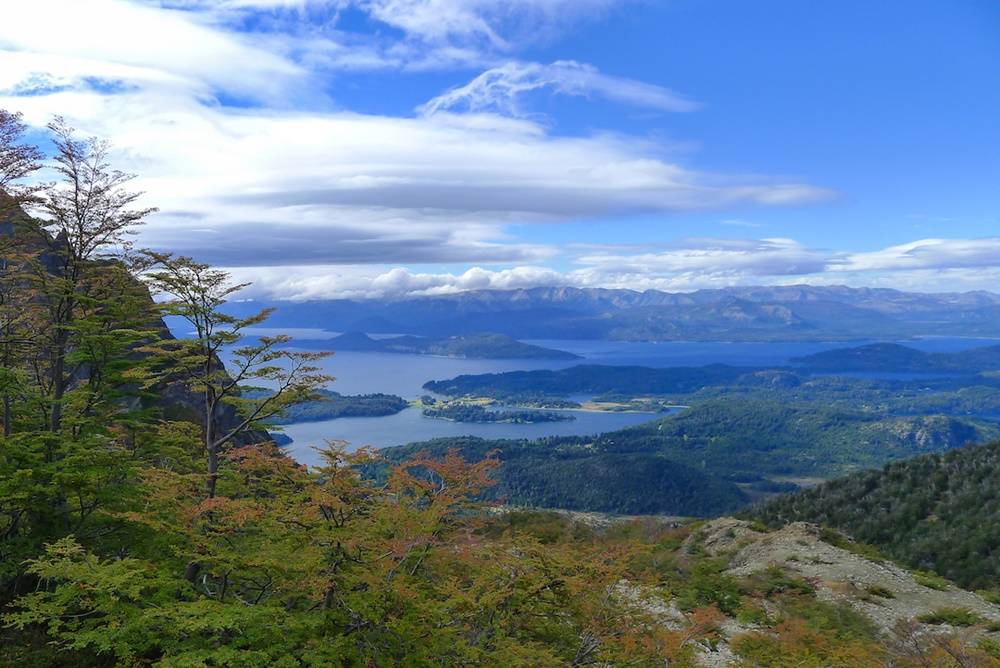
By Ellie of This Remote Corner
Trekking in Argentina’s lake district is a must for anyone who loves the outdoors. One of the best places to do this is San Carlos de Bariloche, a lakeside resort town located in northern Patagonia.
The nearby Nahuel Huapi National Park is a popular destination for rafting, paragliding, mountain biking, and other adventure sports. It’s also one of the best places in the country for trekking, and there are fantastic day hikes for people of all fitness levels. The options range from flat, easy trails through the forest to steep, rocky routes at higher altitudes.
There are also challenging, multi-day treks for more experienced hikers. All of Bariloche’s hikes offer fantastic views of the lake and nearby mountains.
For the best trekking weather, aim for the summer months of December, January, or February. November and March can also be great times to hike with cooler temperatures and fewer crowds. Just keep in mind that certain trails may be impassable due to snow in the early spring or late fall.
Bariloche is a little over two hours from Buenos Aires by air, and flights leave frequently. It is also possible to travel by bus but keep in mind that the trip will usually take close to a full 24 hours.
Once in Bariloche, many of the best hikes are accessible by bus from the town center. Some viewpoints can be reached by cable car, which means you can hike up and ride down (or vice versa).
Bariloche itself is a charming town that is known for its great restaurants, ice cream parlors, and chocolate shops! It is a lovely place to relax before or after your hike.
Wildlife-Watching in Monte León National Park
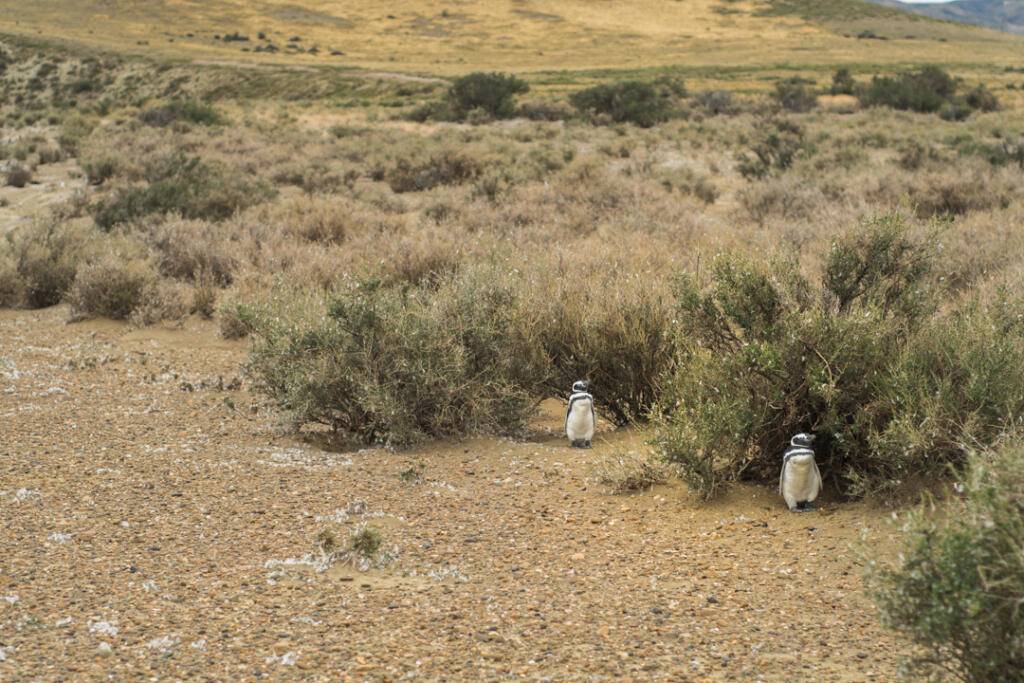
By Sandra of Blue Marble Vagabonds
If you love off-the-beaten-path places, watching wildlife in Monte León National Park is one of the most unique things to do in Argentina. Nestled in Southern Patagonia, this hidden gem stretches along the Argentine coastline for 36 kilometers and offers not only diverse wildlife but also a few fascinating paleontological sites and jaw-dropping landscapes.
Now, picture this: you’re wandering through a national park that’s home to one of Argentina’s largest colonies of Magellanic penguins – tens of thousands! Yep, it’s like a penguin paradise! And the best part? You can stroll among these charming birds in their natural habitat.
It’s a truly unforgettable experience. Penguins are not the only inhabitants here – there are also guanacos, cormorants, grey foxes, and pumas, although you probably won’t spot the latter unless you’re wandering around during the dusk or dawn (which I advise you don’t).
Monte León isn’t as crowded as some of Argentina’s more famous national parks, which is a real plus if you’re looking for a more peaceful experience. We visited in early April, and it felt like we had the place to ourselves.
The best time to go is between September and April when you’ll witness a bustling colony of Magellanic penguins going about their daily lives.
While the remoteness of the park makes it less crowded, accessibility can be tricky. The lack of public transport makes it a bit more challenging to visit if you don’t have your own vehicle.
The nearest town, Comandante Luis Piedra Buena, is 37 kilometers away. So, plan for a taxi or a transfer service to reach your destination or book a tour in Rio Gallegos (about 400 kilometers round trip). If you’re visiting on your own, keep in mind that bad weather can lead to road closures in the park, so it’s wise to have a buffer day in your schedule and check park conditions in advance.
Take a Day Trip to Uruguay

By Catrina of 24 Hours Layover
One of the most unique things to do in Argentina is to take a ferry to a different country for a few hours!
Taking the ferry from Buenos Aires to Colonia del Sacramento in Uruguay is an incredible once-in-a-lifetime experience! With the ferry ride taking just one hour across the Rio de la Plata, you get to witness stunning views of the city’s skyline before arriving at Colonia del Sacramento, an incredibly charming UNESCO World Heritage-listed town.
Stepping foot in Colonia del Sacramento is like stepping back in time. With narrow cobbled streets everywhere, well-preserved quaint colonial buildings, and a palpable sense of history, Colonia is a complete dream.
The historic quarter is the highlight, where you can explore the iconic lighthouse, visit the old Portuguese and Spanish quarters, and stroll along the picturesque waterfront. Colonia has a really unique charm, with its well-preserved colonial architecture and sense of timelessness, which makes this a great day trip from Buenos Aires!
It’s easy to get to Buenos Aires’ ferry terminal by subway and bus system. Booking ferry tickets in advance is definitely advisable, especially during peak tourist seasons. The ferry journey to Colonia del Sacramento from Buenos Aires is comfortable and smooth, so you can relax and enjoy the scenery along the way.
While you can enjoy this day trip on your own, you may find it easier joining a guided tour if you don’t speak Spanish as it does involve passing immigration and entering a different country (so do not forget your passport!).
You also need to get here early as the ferry terminal gets extremely busy and chaotic. A guide can help make things smooth as well as give you some historical context and local insights when you reach Colonia.
Glaciers Cruising in Patagonia

By James of Travel Collecting
One of the highlights of a trip to Argentina is seeing glaciers in Patagonia. A great way to do this is to take a glaciers cruise from El Calafate.
You can buy tickets online or at most accommodation providers in town. They typically include pickup from hotels and hostels in El Calafate, and I recommend doing this. Pickups are in small minivans, so don’t take too long.
This is a popular activity, so there are usually a small handful of large catamarans that cruise along Lago Argentino. This is a milky grey-blue-colored lake that gets it unique color from ‘rock flour’, a powder formed as surrounding glaciers grind the ground into a fine dust that then colors the lake.
After the boat passes through Boca del Diablo (Devil’s Mouth), the narrowest section of the lake, we were able to go outside. The lake is strewn with bright blue icebergs of varying sizes, and there are plenty of opportunities to have your photo taken with icebergs in the background.
In addition to all the icebergs, there are two main glaciers visited on the cruise. The first is a panoramic view of the largest glacier in South America, Upsala Glacier. The cruise also passes a small receding, landlocked Seco (Dry) Glacier before arriving at the smaller but spectacular Spegazzini Glacier.
The boat goes much close to the face of this glacier and it is truly breathtaking. You can hear the glacier cracking as the ice shifts and you may even see part of the glacier fall off (calve) and create icebergs.
Food and drinks are available on the boats, though you can also bring a packed lunch with you. Cruises are typically from early morning to mid-afternoon.
Exploring the San Telmo Neighborhood in Bueños Aires

By Emily of Pets Around the World
Buenos Aires is a city that is alive and magical. To truly feel its heartbeat, head to the San Telmo neighborhood. The main street is shut off from cars once a week and people flood the area. Depending on where you are starting from, you may need to take a taxi or public transportation, but then you will want to walk in the mix of everything.
In other cities with these types of events, product booths tend to fill the streets and the focus is on selling. It is different in San Telmo. Instead, there are musicians, artisans, and performers all along the streets. Sure, there are vendors as well, but often down the side streets. The main attractions are the music and dance.
Set aside the entire afternoon and evening, so you aren’t rushing off to a scheduled event. You will want to be carried away in the moment. It’s the perfect place for romance, a fun day with a best friend, or taking your purse pup on a stroll.
There is nothing like tango. The music and the dance are mesmerizing. You will leave with a newfound appreciation for accordions and their players. Unless you are already part of the tango world, you will never have seen anything like it. Hearing it come alive in the streets is something else entirely. The music has an enchantingly eerie quality that is inescapable.
For the rest of your stay in Argentina, the music will stick with you and create the soundtrack for your journey.
Seeing the Majestic Iguazu Falls

By Campbell of Stingy Nomads
The breathtaking Iguazu waterfalls are the largest waterfall system in the world and one of the best places to visit in Northern Argentina. The spectacular site is made up of 275 individual drops stretching for 2700m to connect the countries Argentina and Brazil.
The falls can be accessed from 3 countries; Foz do Iguaçu in Brazil, Puerto Iguazú in Argentina, and Ciudad del Este in Paraguay.
The Iguazu Falls are split between two UNESCO World Heritage Sites: the Iguazú National Park in Argentina and the Iguaçu National Park in Brazil. The majority, 80%, of the falls are located on the Argentinian side, and visiting the site is a bucket list experience.
When you enter the park in Argentina you can catch the Ecological Jungle Train to the Iguazu Falls Train Station where the main walking trails start.
There are five trails that you can walk varying between 1km and 7km. The two main trails are the Upper Circuit and Lower Circuit. The Devil’s Throat is the largest and most impressive of the falls at Iguazu.
In Iguazú National Park, the view of the Devil’s throat is a spectacular aerial view, seeing this mass of water tumbling over the cliff from the top is an amazing experience. A boat ride that goes under the falls is a fantastic activity offered in the park, not to miss!
The falls are easy to reach by bus from the town of Puerto Iguazu, about 20 km from the falls on the Argentinean side.
Riding the End of the World Train

By Pamela of Directionally Challenged Traveler
As the southernmost city in the world, Ushuaia is nestled on the rugged shores of Tierra del Fuego, Argentina, surrounded by stunning landscapes that evoke a sense of remoteness and adventure.
Riding the train at the end of the world in Ushuaia is a journey unlike any other. The Train of the End of the World, or “Tren del Fin del Mundo” in Spanish, offers an unforgettable experience that takes travelers through the heart of this pristine wilderness.
The train station is located 8 kilometers (4.5 miles) from Ushuaia. The train operates 365 days a year with 3 daily departures from the train station in Ushuaia. The train station is also home to a lot of historical information about the penal colony and the railroad’s use during that time.
The train’s 7km route retraces the historic path of the prisoners who once toiled in the nearby penal colony, capturing the imagination with tales of hardship and resilience.
Each season brings something new for visitors – whether it’s frozen waterfalls in the winter, new blossoms in spring, rich flora in summer, or fall foliage in autumn, you won’t be disappointed. All year, you’ll be treated to breathtaking views of snow-capped peaks, dense forests, and the serene waters of the Pipo River.
It’s a landscape that seems almost untouched by time, and the train’s slow pace allows passengers to fully immerse themselves in the natural beauty that surrounds them. You can also see wild horses that roam the area if you go in the warmer months.
As the train chugs along, guides share stories about the region’s history, its indigenous peoples, and the remarkable flora and fauna that call this remote corner of the world home. While it’s a relatively short ride, it’s easily one of the most unique things to do in Argentina.
Save it on Pinterest for later:








